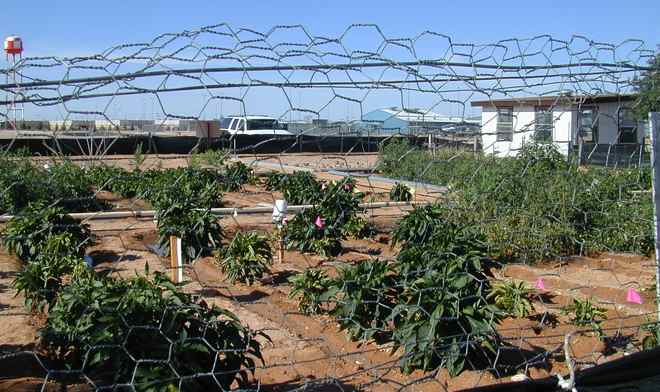Every day, four inmates of Texas’s Smith County Jail are transported 18 kilometers from the jail, where they spend the day hard at work. Unlike standard prison labor programs however, the fruits of these prisoners’ labors are actually fruits—and vegetables. Smith County Jail is one of several prisons in the county that are giving inmates the opportunity to give back to the community, and provide fresh produce for themselves.
Since 2010, inmates who have demonstrated good behavior are given the opportunity to work in the Smith County Jail’s garden, where they grow tomatoes, corn, squash, peas, and other produce. The produce is then sent back to the prison, or shipped to nearby communities where local organizations such as the East Texas Food Bank provide meals to needy families.
While it may seem unconventional, this program is nothing new. Starting in 1992 with The Garden Project, American prisons have turned to gardens and farming as a way to reward and encourage good behavior, while also allowing prisons to make a positive contribution to nearby communities.
For prisoners, spending time in the gardens is “a whole lot better than sitting in one place and having to count the minutes go by,” according to Diana Claitor, director of the Texas Jail Project. Prison coordinators from Ohio’s Sandusky County Jail have commented that the satisfaction of gardening “gives inmates a sense of self-worth.” Moreover, prisons typically use gardening as an incentive to encourage good behavior.
But the system has its limitations. It works best in areas that have large tracts of available and fertile land. Additionally, only low and medium security prisoners, who can be allowed to leave prison grounds without safety concerns, are able to participate in these programs. The Garden Project however, has shown that prison gardening has improved the quality of rehabilitation overall.
In addition, communities surrounding these gardens also reap their benefits. Portions of the produce are directed back to the prisons, where they are used in the preparation of meals. A jail in Northwest Ohio reports savings of over US$25,000 as a result of prison gardens. And the majority of this produce is directed into the communities, where it is provided to food banks that distribute meals to struggling families. In Chicago, Cook County’s Sheriff Dart says that prisons have been “bringing gardens into communities which may lack local supermarkets that provide healthy and sanitary produce.” The garden at Cook County Jail boasts a contribution of 2,700 kilograms of produce in a single season. In other, less urbanized parts of the country, the yields of prison gardens are even greater. Since 2010, Smith County Jail in east Texas has delivered over 68,000 kilograms of produce to local food banks, enough to provide meals to 125,000 families.
These prison gardening systems represent a way prisons can establish a relationship with surrounding communities, and give inmates the opportunity to reap the benefits of gardening—and eating healthy food.













